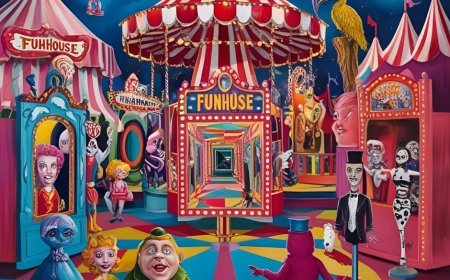Kitchell’s Composite Madonna
Artist Joseph Gray Kitchell spent years creating a "Composite Madonna," which he did by superimposing 271 photographs of Virgin Mary paintings on top of each other. He released the final result as a print in 1899. Below is the best copy of it that I could find. Source — Signs of grace: religion and American art in the Gilded Age, by Kristin Schwain (2008) More info from Adam Greenhalgh who wrote briefly about Kitchell in his 2012 doctoral dissertation, "Risky Business: Chance and Contingency in American Art Around 1900." Created by superimposing photographs of 271 paintings of the Virgin Mary, the "best Madonnas painted by the great Masters during a period of 300 years," Kitchell's Composite Madonna was declared "the climax of scientific art." Kitchell selected physiognomies, mostly frontal or in three-quarter view, from "a collection of over two thousand Madonnas," including those by Raphael, Murillo, Rubens, Van Dyke, Michelangelo, Rembrandt, Holbein, Correggio, Bellini, Perugino, Giorgione, Botticelli, and others. Kitchell's composite, along with a selection of the individual images from which it was produced, was illustrated in the San Francisco Call in 1899. It was also reproduced in popular periodicals such as Harper's Bazaar, The Ladies' Home Journal, Photographic Times, and Literary Digest, as well as daily newspapers such as the Los Angeles Times, the Chicago Daily Tribune, New York Tribune, the New York Times and others... Kitchell's photographic composite was transcribed in oil on canvas by Elliott Daingerfield, alleged to be "the greatest American painter of Madonnas." Daingerfield's painting "corrected" certain "errors of line inseparable from the blending of so many faces [that] naturally crept into" the final composite. Despite this correction, it is notable that Daingerfield faithfully replicated the diffuse all-over blur and soft haze of a classic Galtonian composite... Each individual component that made up Kitchell's composite received equal weight during the process of superimposition; the result, therefore, was theoretically a mean average. According to commentators, though, the oft-reproduced print transcended the mediocrity implied by the concept "average." It was adjudged to have filtered individual imperfections to offer a physiognomy more in keeping with the moral character of the Virgin: "sublime," "perfect," "full of grace, so spiritual." Similarly, a writer for the Indianapolis Journal found it to be "strangely mysterious and spiritual. This sentiment is repeated verbatim in the Chicago Daily Tribune, which also described it as "remarkably distinct, full of calm repose, maidenly, but with the dignity of maternity—a face indescribably sweet, resigned, sad, a wondrous blend of simplicity and inspired wisdom. In the face is seen the loftiest ideal possible in the heart and mind of mankind." Below is Elliott Daingerfield's oil-painting version of Kitchell's Composite Madonna. Many of the publications that I came across didn't seem to be aware that the oil painting was different than the photographic composite. They simply referred to the oil painting as Kitchell's Composite Madonna.


Source — Signs of grace: religion and American art in the Gilded Age, by Kristin Schwain (2008)
More info from Adam Greenhalgh who wrote briefly about Kitchell in his 2012 doctoral dissertation, "Risky Business: Chance and Contingency in American Art Around 1900."
Kitchell's photographic composite was transcribed in oil on canvas by Elliott Daingerfield, alleged to be "the greatest American painter of Madonnas." Daingerfield's painting "corrected" certain "errors of line inseparable from the blending of so many faces [that] naturally crept into" the final composite. Despite this correction, it is notable that Daingerfield faithfully replicated the diffuse all-over blur and soft haze of a classic Galtonian composite...
Each individual component that made up Kitchell's composite received equal weight during the process of superimposition; the result, therefore, was theoretically a mean average. According to commentators, though, the oft-reproduced print transcended the mediocrity implied by the concept "average." It was adjudged to have filtered individual imperfections to offer a physiognomy more in keeping with the moral character of the Virgin: "sublime," "perfect," "full of grace, so spiritual." Similarly, a writer for the Indianapolis Journal found it to be "strangely mysterious and spiritual. This sentiment is repeated verbatim in the Chicago Daily Tribune, which also described it as "remarkably distinct, full of calm repose, maidenly, but with the dignity of maternity—a face indescribably sweet, resigned, sad, a wondrous blend of simplicity and inspired wisdom. In the face is seen the loftiest ideal possible in the heart and mind of mankind."
Below is Elliott Daingerfield's oil-painting version of Kitchell's Composite Madonna. Many of the publications that I came across didn't seem to be aware that the oil painting was different than the photographic composite. They simply referred to the oil painting as Kitchell's Composite Madonna.

What's Your Reaction?







































